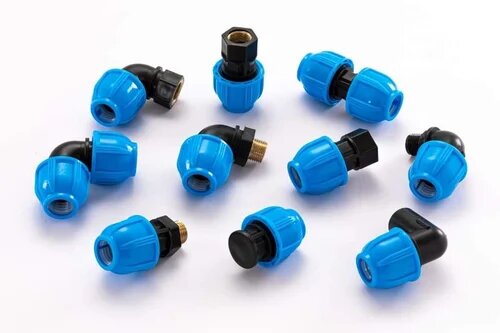Introduction to MDPE Pipe Fittings
MDPE (Medium Density Polyethylene) pipe fittings are a crucial component in various piping systems used for water, gas, and other fluid transport. Known for their durability, flexibility, and corrosion resistance, MDPE fittings play a vital role in ensuring a safe and efficient flow of materials. However, the proper use and installation of these fittings are paramount to ensure safety and compliance with industry standards.
Understanding the Basics of MDPE
Before delving into the specifics of MDPE pipe fittings, it’s essential to understand what MDPE is and why it’s widely used. MDPE is a type of polyethylene with a medium density range. This material is less dense than HDPE (High-Density Polyethylene), making it more flexible. This flexibility is particularly beneficial in environments where ground movement or temperature variations are common, as it reduces the likelihood of pipe cracking.
Advantages of Using MDPE Pipe Fittings
MDPE pipe fittings offer several advantages over traditional materials like copper or steel. Their corrosion resistance ensures a longer lifespan and reduces maintenance needs. Additionally, MDPE’s flexibility allows for easier installation, especially in challenging terrains. These fittings are also lightweight, reducing transport and handling costs.
Ensuring Safety in Installation
The safety of MDPE pipe fittings hinges on proper installation. It’s crucial to follow manufacturer guidelines and industry standards to avoid leaks and pipe failures. Key points include ensuring that fittings are correctly sized for the pipes, using the right tools for installation, and checking for a secure seal. Proper training for installers is also essential to avoid mishaps.
Compliance with Industry Standards
Compliance with industry standards is not just a legal requirement; it’s a safety imperative. Standards such as ISO 4427 for water and ISO 4437 for gas outline specifications for MDPE pipes and fittings, ensuring they are suitable for their intended use. Regular audits and checks should be carried out to ensure ongoing compliance.
The Role of Quality Control
Quality control is crucial in the manufacturing and selection of MDPE pipe fittings. Products should be sourced from reputable manufacturers who adhere to strict quality standards. Inspections for defects, correct sizing, and durability are essential steps in the quality control process.
Addressing Environmental Concerns
MDPE pipe fittings are often praised for their environmental benefits. Being made from a thermoplastic, they are recyclable, reducing their environmental footprint. However, it’s important to ensure that MDPE fittings are disposed of correctly at the end of their life cycle to avoid environmental harm.
Innovations in MDPE Fittings
The field of MDPE fittings is continually evolving, with innovations aimed at increasing safety and efficiency. New designs are being developed to handle higher pressures and temperatures, expanding the range of applications for MDPE pipes. Smart fittings with built-in sensors are also emerging, enabling real-time monitoring of pipe systems.
Training and Education
Adequate training and education are paramount for those involved in the installation and maintenance of MDPE pipe fittings. Training programs should cover the latest techniques, tools, and safety protocols. Regular refresher courses can help ensure that personnel stay updated with the latest industry standards and practices.
Conclusion
MDPE pipe fittings are a vital component in modern piping systems, offering a combination of durability, flexibility, and cost-effectiveness. Ensuring their safe and compliant use is essential for the integrity of piping systems. This involves adhering to industry standards, proper installation practices, ongoing quality control, and commitment to training and education. With these measures in place, the benefits of MDPE pipe fittings can be fully realised, contributing to efficient and safe fluid transport systems.

